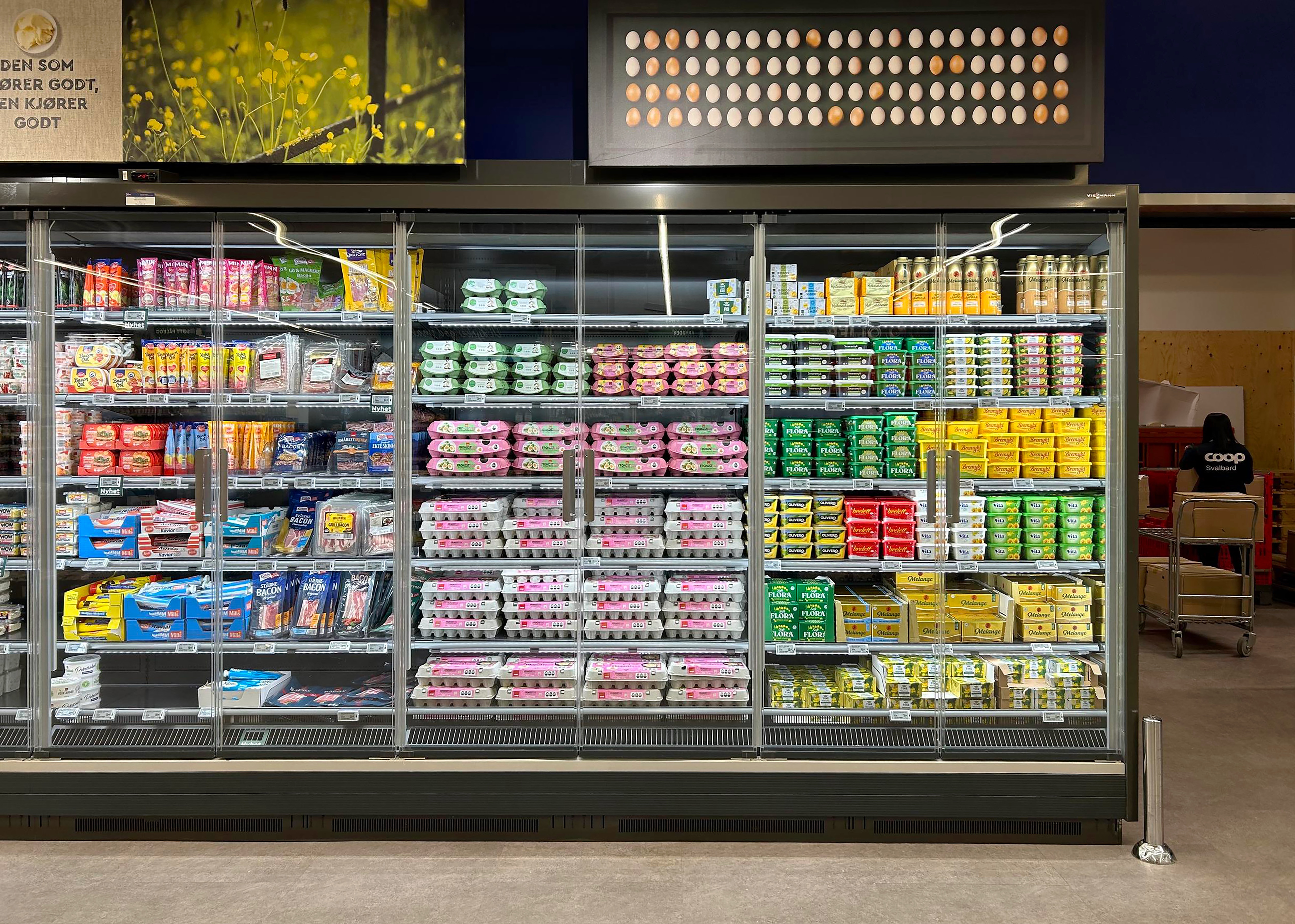In-Svalbard: Architecture, Agriculture and Global Abstraction
Contributor
“How Was It?”
The following passage reflects on solo travel to the arctic territory of Svalbard in June 2024. Travel was generously funded by the George G. Booth Fellowship and supported an extension of research topics explored in association with the author’s M.Arch Thesis at University of Michigan, Taubman College of Architecture and Urban Planning.
—
Just over a year ago, I found myself standing inside a large, modern grocery store less than 800 miles from the North Pole. Light from linear fixtures illuminated rows of fully-stocked shelving, and I couldn’t help but marvel at how out of place the scenery felt on an island 650 miles off the coast of mainland Norway. If you happen to visit The Svalbard Store sometime soon, you might find fresh eggs and produce in the cooler section alongside Coca-Cola products, and—on the other side of the store—offerings of home goods, electronics, and giant plush polar bears.
This supermarket can be found in a small town called Longyearbyen, home to roughly 2,500 residents and situated on a fjord within the sovereign territory of Svalbard. This region was referenced in Icelandic records as far back as the 12th century, and extensively documented by explorers and whalers in the late 1500s. Since then, coal mining has heavily influenced settlement in the archipelago, including Longyearbyen and a few other locations dispersed across the main island of Spitsbergen.
My intrigue with Svalbard originated with architecture that learns from and adapts to infrastructure left behind by industries of extraction; in particular, the Svalbard Global Seed Vault (SGSV), which maintains a Norwegian-funded extranational archive just outside of Longyearbyen. The vault hosts agricultural seed stock from every nation on Earth, acting as a failsafe in the case of regional environmental disaster. The SGSV facility tunnels into the permafrost of the Spitsbergen mountainside, redeploying the typology of the mine shaft to support its futurist programming.
Visiting this vault in person felt surreal; its brutalist entry structure rises from the snow in a simple triangular expression, sealed by a heavyset steel door. The somber grays and browns of the vault stand in stark contrast to the vivid reds, greens, and yellows of the produce aisle inside The Svalbard Store. The aesthetics of these places, however, are of less interest than the underlying principles and abstracted systems they reinforce. In one, seeds slumbering in permafrost-lined chambers serve as a global insurance policy, securing agricultural biodiversity against plague, war, and climate change. In the other, expectations carried by transplanted workforces—seeking convenience and consumerism in even the harshest permanent settlements on earth—require the typology of the store–stockpile to extend modernity’s reach to Svalbard, where tourism and climate research sustain a sizeable population even as the mining industry slows down. The abstraction that occurs between global sites of production and consumption—where one need not comprehend the means and methods underpinning their lifestyle, nor acknowledge how vast these systems reach—is poignantly juxtaposed within the confluence of architecture and agricultural exchange in the circumpolar north.
Here, we find a sphere of influence that both relies upon global systems while also ensuring them. In Svalbard, an intangible flow of products and services lies entangled with veiled networks of actors, occupying the Arctic without ever seeing it. In a future where territories like Svalbard continue to reimagine infrastructures left behind from past industries of extraction, it’s important to remain critical of the assumptions accompanying designed futurescapes of global interconnectedness, especially as they seek to avoid merely replicating past impositions masked with added layers of abstraction.
